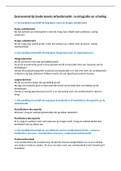College aantekeningen
Cognitive psychology part notes from lectures and book (syllabus)
These notes are for the cognitive part of biological cognitive psychology. They include a combination of the lectures of R. Godijn and his syllabus (9 chapters) that he wrote himself. There are a lot of visuals to remember the materials better. (tip: memorize the names of the researchers to use th...
[Meer zien]













